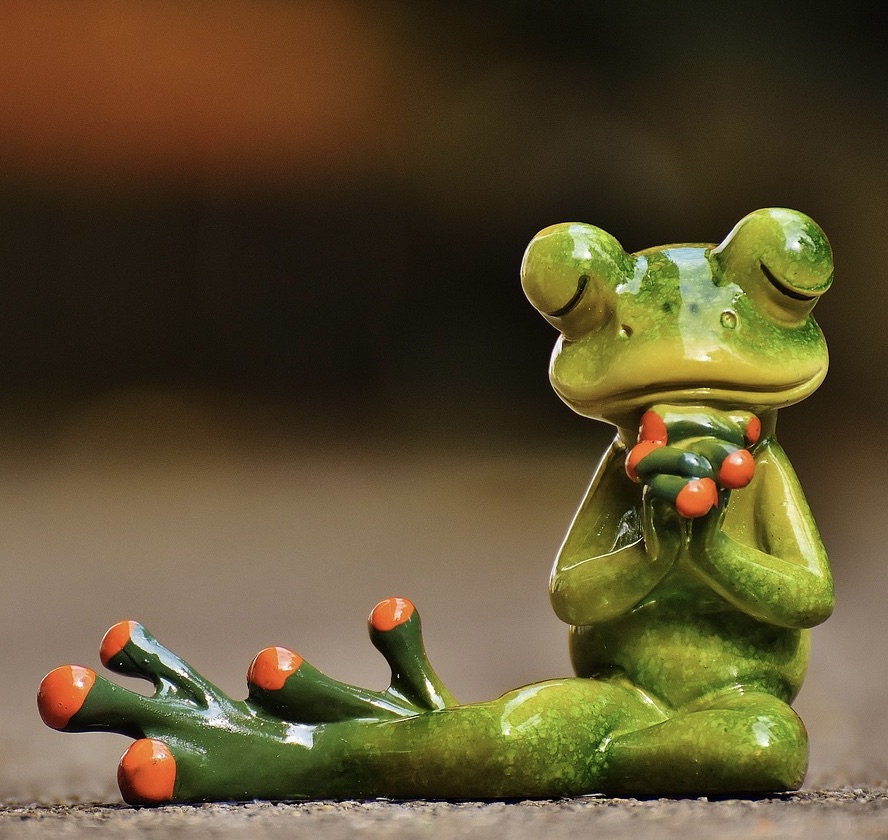Notes from a Curator | Lydia Moyer
My most recent curatorial experiment (which is how I think of these things, not of being a curator) was a six-woman gallery show called Terrestrial Transmissions. It commandeered the Ruffin Gallery at the University of Virginia where I teach and practice as a video artist.
The single-channel video works that I selected for this show had roots in another project, an ongoing monthly screening I organize in the Fine Arts Library at UVA. A couple years ago, I put out an open call for work to review for future programming for the library. I got a good response from artists all over the world (the internet can be great that way) and I became interested in a major theme: a number of women were making work that engaged with tropes of science fiction. And it was strong, interesting work at that.
Stephanie Hough, still from Spam (The Proposition)
Of particular interest to me was the theme of transmission—the attempts to communicate with some kind of other. Of course transmission is not an uncommon theme in video art, having roots in broadcast or signal transmissions. But these transmissions seemed different, more human–coming out of a deeply held desire to communicate with something outside the self, be it men or plants or the great unknown.
This caught my attention. I’d been thinking of a conversation I’d once had with a colleague at UVA who does research in the psychology of romantic couples. Women are traditionally posited as the gender that is better at communicating, better at listening, more attuned to the emotions of others. According to my colleague, this assumption isn’t indicative of some biological difference in women but rather the logical outcome of their historically inferior social position, at least in Western culture. In other words, the assumption is an illustration of how social power functions in individual relationships. Women are better listeners because they have for much of history been in a weaker position than men socially, financially and legally. The seemingly weaker individual in a couple, regardless of gender, almost always becomes more attuned to the partner who is seen as more powerful. When the man perceives himself to be in a weaker position in a romantic relationship, he will become a better listener, attentive in the ways we attach to the feminine. Women aren’t better communicators so much as they have just been more motivated.
The pieces I chose for Terrestrial Transmissions investigate this motivation, using female figures (in many cases the artist herself), and situating them in landscape. In each work there’s a desire to make contact with an other, an other as unfamiliar as an extraterrestrial. The desire plays out in many very different and exciting ways.
Julia Oldham’s work casts flora as the other. Her Possumhaw Plant Electrics series is product of her residency at the Bernheim Arboretum in Kentucky, during which she lived in a small cabin and had the run of the place. In the work, Julia plays a technician from a fictional electronics company specializing in communicating with plants. She wraps wire around cedar knees, plugs headphones into stumps, and tunes into the frequencies of sticks. In the most visceral of the four pieces in the series, Radioactive Fairytale (above), she becomes the tuner: copper wires sprout from her teeth and run into a tangle on the green grass. Is she struggling to hear the uncooperative plants? What are they trying to communicate? Silence presents questions, a space for quandary and desire to flourish.
Meredith Drum, still from The Double
Meredith Drum’s The Double is probably the most narrative of all the work in Terrestrial Transmissions. Again, silence plays a pivotal role. The story focuses on the oblique tale of two females seemingly trying to free themselves from some manner of captivity. They observe their captors from the grass. The two women use whistling to hypnotize and sedate them. Just when we think they are free, we’re given a clear shot of one of the women entranced, though we can’t see by whom or what. The frame cuts to a shot of a man, his slow smile, and then to the man and woman riding off into the distance on a single bicycle .Is she reconciled with a lost lover? Is she returned to the clutches of a captor? We don’t know. Through the course of the video, the men never utter a word, begging the question: what role does silence play in power and transmission?
Ashley Brett Chipman, still from Here the Birds Fly
Inspired by practices like spiritual telegraphy and deep channel fishing, Ashley Brett Chipman’s work draws on the history of transmission—in this case with the spirit world—and how technology inspired new attempts to bridge the gap between life and death in the nineteenth century. In Chipman’s work, unnamed young women seem to be striving to contact a lost loved one. Here the Birds Fly attempts transmission on a rooftop, signaling with a mirror into the sky. The means of transmission in Here the Birds Fly either pre- or post-dates wired communication – there are no cables or cords or antennae, suggesting a wirelessness that is both primitive and familiar to us. What does the presence of wires do to our ideas about silence, transmission, reception? In Spaceships in Rule 110, another of Chapman’s pieces in the show, wires connect a girl, eyes cast heavenward, to a pair of lemons and a mysterious grassy beacon.
Krista Caballero, still from All Appears Orange
Krista Caballero’s All Appears Orange complicates the theme further. For Krista, a distress signal is communicated by her handmade antennae (which also functions as sculpture in a larger installation), inspired by recent international reports that disasters will become more and more common as the world’s population increases and the climate enters into the chaos of change. The transmitter, when she appears, is a woman shot from a low angle against the sky.
Another and very different sort of distress is conveyed in Stephanie Hough’s video, Spam (The Proposition). I selected this piece to be installed outside of the gallery: the transmission is from the future, a disembodied female face scaled with sequins. She recounts the text of email spam and reinterprets them as warnings, hypnotic and sparkling. In the larger context of the show, Hough’s interpreter acts as a kind of greeter into the gallery’s transmitting space.
As curator, I had quite a few challenges in transmitting all of these transmissions in one space—blocking the gallery entry in order to create an adequate darkness, arranging all the video work so that these transmissions could be received by visitors, maintaining the integrity of each work according to the artist’s specifications. In the case of the anonymous artist Madam X’s work, I wanted CRT monitors for aspect ratio as well as to maintain the reference to broadcast television that is so strong in what she makes: frame-by-frame animations with a female voiceover conveying an enigmatic, New-Agey message from “the Human Being Society.” We used headphones for her work as well. Thinking about space in terms of audible and ambient sound engaged me in presenting these works.
Madam X, still from Human Being Society
Tech issues kept me running during the opening, which is too bad—only because the thing I like most about curating is the opportunity to see other work, to feel connected to it and to the artist. For me it’s a way of maintaining some sense of community from my outpost in central Virginia. There aren’t many people in my immediate environment working in video—exploring the different kind of functions and forms video can take—and inspired by video’s collectivist and alternative history. So I sometimes feel isolated creatively, which is probably par for the course for a lot of academic artists. At the same time, I like living in the small town where I teach. Curating allows me to connect to other artists—to other work— without the need to travel. It creates community despite physical distance. Maybe the gallery isn’t designed for video transmissions. But I can fit fifteen years worth of work onto a DVD or a website, and someone out there can find it.
__
Lydia Moyer is a media maker and visual artist based in central Virginia. Her work has been screened at festivals in the US and abroad including the European Media Arts Festival in Germany, the Black Maria Festival in Jersey City, the Hot Springs Documentary Festival in Arkansas, and the PDX Festival in Portland, Oregon. She directs the new media program in the art department at the University of Virginia.
Born in Ireland in 1982, Stephanie Hough grew up in a Bar, where her interest in the broader spectrum of society and social interaction began. She graduated from the Crawford College of Art & Design in 2005 and received an MA from the National College of Art and Design, Dublin.
Julia Oldham’s videos and drawings dramatize scientific and mechanical systems and theories. Oldham studied art history at St. Mary’s College of Maryland and then received her MFA from the University of Chicago. She spends her time in New York and Oregon. Her work has been screened widely in the US and abroad.
Born in North Carolina, Meredith Drum moved to NYC in 1997 where she lived until 2009, working as a video editor, videographer and artist-in-residence in public schools through nonprofits and museums. In 2009, she returned to school to earn her MFA at UC Santa Cruz’s the Digital Arts and New Media program. In 2012 she moved back to Brooklyn and is now a visiting instructor at Pratt Institute.
Ashley Brett Chipman trained to be a professional ballet dancer from the age of seven. She began exploring 16mm film at the University of Virginia, while continuing ballet, and graduated in 2009. A recipient of an Aunspaugh Fellowship, she has recently relocated to New Orleans to continue making films.
Krista Caballero is a sculptor and new media artist. Her current project, Mapping Meaning, provides a forum for artists, scientists and scholars to engage topics of the environment through interdisciplinary dialogue and exchange. She received her M.F.A. from the School of the Museum of Fine Arts / Tufts University and has exhibited both nationally and internationally. She is the associate Director of Digital Cultures and Creativity at the University of Maryland.
Madam X is an animator based in Los Angeles, CA. She is the founder of the Human Being Society.






![Monument for Inger Christensen. Photo by David Stjernholm. Featured image for [o] by Kristi Maxwell.](https://atlengthmag.com/wp-content/uploads/2025/06/Monument-for-Inger-Christensen_Kaare-Golles_002_Photo-by-David-Stjernholm-1280x914-1.jpg)
